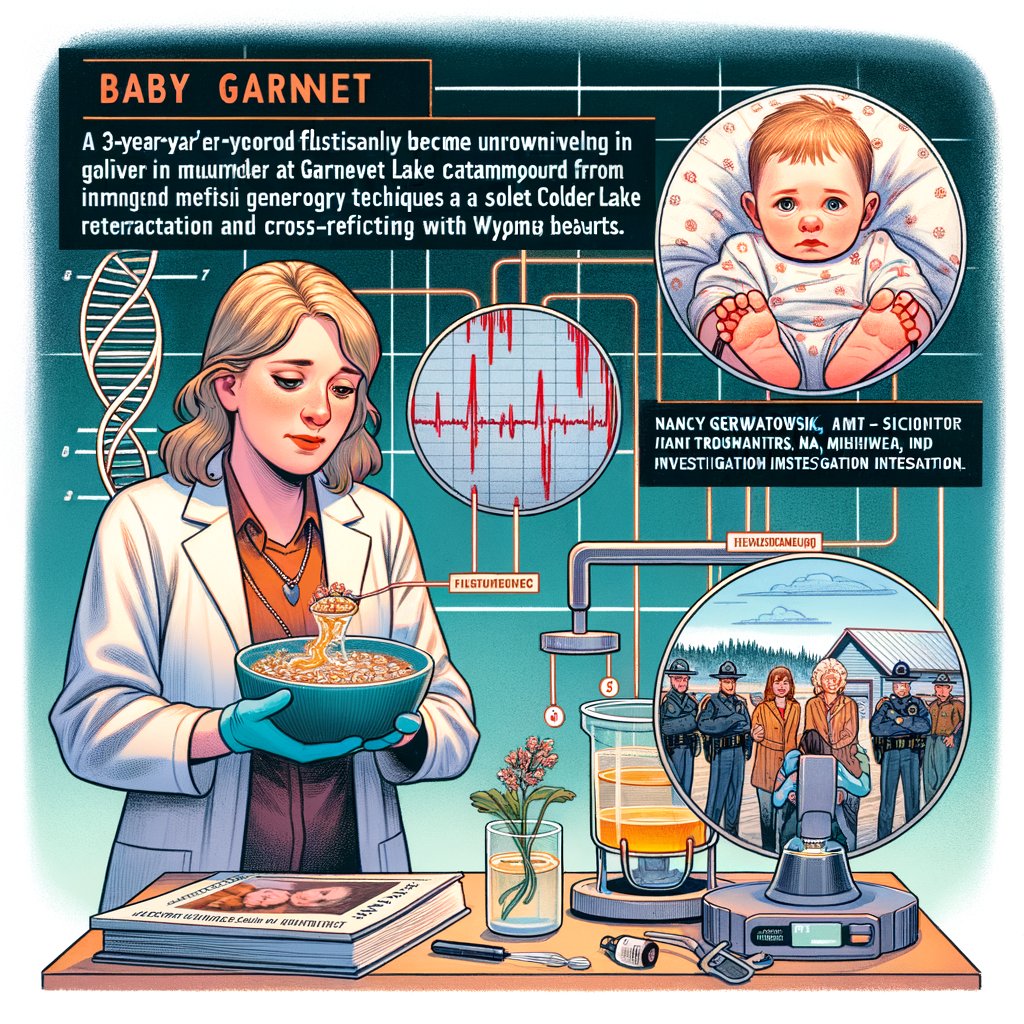Image created by AI
DNA Test Reveals Shocking Connection to Decades-Old Murder Case
In an unexpected twist of fate, a simple DNA test taken for entertainment transformed into a crucial piece of evidence in solving a decades-old murder case in Newberry, Michigan. Jenna Gerwatowski, a 23-year-old local florist, became the center of a forensic investigation that had puzzled authorities for over 25 years.
In 1997, the small community of Newberry was shaken by the tragic discovery of a dead infant, known as “Baby Garnet,” found in a pit toilet at Garnet Lake Campground. Despite extensive investigations, the case eventually went cold, leaving haunting questions unanswered. However, in 2022, Jenna’s decision to explore her ancestry through a FamilyTreeDNA kit unexpectedly linked her to the infamous case.
The Michigan State Police, who had reopened the investigation in 2017, collaborated with Identifinders International, a genetic genealogy investigation firm. They utilized advanced DNA extraction techniques on remains recovered from Baby Garnet and ran them against results in the DNA database, which led them directly to Jenna.
After the startling revelation that her DNA was a match for Baby Garnet’s relatives, Jenna was plunged into a bewildering situation. At first dubious and fearing a scam, Jenna grappled with the possibility of being linked to the notorious case. Her mother, Kara Gerwatowski, also became a focal point of the investigation once detectives established her as Baby Garnet's aunt.
Under immense emotional stress, Kara disclosed that if any connection existed, it would likely concern her estranged mother, Nancy Gerwatowski, whom Jenna had never met. Police then approached Nancy in Wyoming, where she was residing. The attorney general’s office accused Nancy of causing the death of Baby Garnet by failing to seek necessary medical intervention during an undisclosed and solitary childbirth in 1997.
Nancy Gerwatowski now faces significant charges, including open murder, as the legal system progresses with a case built on a mix of old evidence and new genetic genealogy techniques. The defense paints a different picture, suggesting a traumatic birth experience without access to immediate medical care led to the unfortunate death, a scenario that they argue could not be unequivocally proven as murder.
This case highlights not only the powerful impact of DNA technology in revising cold cases but also the complex ethical and personal ramifications of genetic testing. Jenna, while relieved to aid in solving a long-standing mystery, now deals with the profound emotional repercussions of discovering such stark truths about her family history.
The Newberry community and the Gerwatowski family await further proceedings, hoping for closure on a saga that spans generations, intertwined with advances in forensic science and the unpredictable results of exploring one's ancestry.










